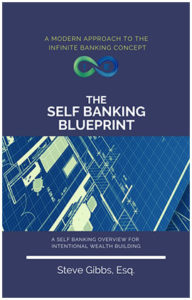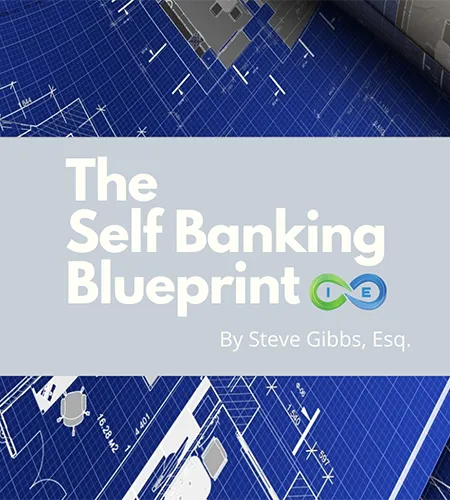How Indexed Universal Life Insurance Works: A Step-by-Step Guide
Life insurance can be an integral part of retirement and estate planning. That is because this financial vehicle can offer not only the “safety net” of death benefit protection, but also the ability to safely grow wealth on a tax-advantaged basis, along with the option to access cash tax-free.
Given its wide range of benefits, one particular type of life insurance – indexed universal life (IUL) – is often referred to as a “Swiss army knife,” as it can provide solutions for supplementing tax-free retirement income, paying for healthcare or long-term care expenses, and covering taxes on future asset transfers.
Yet, because IUL can be somewhat complex, it is important to have a good understanding of how it works, and how it differs from other forms of life insurance policies that are available in the marketplace today.
Table of Contents
- Introduction to IUL
- What is Indexed Universal Life Insurance?
- How IUL Works
- Premium Allocation
- Understanding IUL Interest Crediting Methods
- IUL vs. Other Life Insurance Types
- How Much Does IUL Cost?
- Tax Advantages of IUL
- Real-World IUL Applications
- Is IUL Right for You?
- Next Steps
Introduction to IUL
The popularity of IUL continues to grow, with recent data showing that IUL accounted for 24% of the total U.S. life insurance market in 2024, with annual new IUL premium at $3.8 billion (up 4% year-over-year).
IUL at a Glance
Indexed Universal Life (IUL) insurance combines permanent life insurance protection with cash value growth potential tied to market indexes, while protecting against market losses.
IUL policy count grew 10% year-over-year in 2024, with a 6% increase in the fourth quarter alone. This growing popularity is due to the unique combination of features IUL offers for both protection and growth.
What is Indexed Universal Life Insurance?
IUL is a type of permanent life insurance. That means it offers death benefit protection, as well as a cash value component. Other types of permanent life insurance also possess these features, but IUL has some distinct advantages.
For instance, whole life insurance is designed to provide death benefit protection for the remainder of your lifetime (provided that premiums are paid). The amount of the premium remains fixed throughout the life of the policy, and the death benefit is guaranteed.
Traditional universal life is another form of permanent life insurance. These policies offer more flexibility in both the premiums and the death benefit, though, as compared to whole life insurance. For example, you may (within certain parameters) increase or decrease the amount of the death benefit coverage.
Likewise, you may also be able to alter the amount and the frequency of your premium payments. As with other types of permanent life insurance, a portion of your universal life premium goes towards the cost of the insurance protection and the rest is allocated to the cash value component.
How IUL Works
In many ways, indexed universal life (IUL) insurance is similar to traditional universal life insurance. Where the two differ the most is in how the return on the cash value is determined.
For example, with IUL, the return is tied to one or more underlying market indexes, such as the S&P 500 or the DJIA (Dow Jones Industrial Average). This can allow for more growth of the cash value – in some cases, much more – as compared to whole life or traditional universal life insurance.
Key Benefit
While the cash in an IUL policy has the opportunity to generate a healthy amount of growth, it is also protected from market losses in any type of stock market or economic environment. This essentially offers a win-win scenario.
Premium Allocation
Within an IUL policy, there are two portions that your premium payment will be allocated to:
- The Insurance Portion: This is what pays for the policy’s death benefit.
- The Cash Value Portion: This account grows based upon how much you contribute via premiums, as well as on the growth percentage of the underlying market index(es) that your account is linked to.
IUL cash value accounts can be based either on one single market index, or on a combination of several market indexes. Indexed universal life insurance policies typically also offer a fixed account option where some of the funds may be allocated.
Understanding IUL Interest Crediting Methods
There are a few important parameters inherent inside the cash value portion of an IUL policy:
The Cap Rate
The cap is the highest percentage rate that your policy can be credited – regardless of how much the underlying index returns in a given year.
For instance, if the policy has a cap of 8% and the underlying index attains 10% growth in a given time period, the cash value will be credited with a return of 8%.
The Floor Rate
The floor is a guaranteed minimum return, or a protection against market downturns.
Therefore, while the cash value may not receive the full amount of a large gain in an underlying index, your funds – including any previous growth – are also protected from market downturns. This means that when an underlying index turns around and starts to generate gains again, there is no need to “get back to even” in the cash value component.
The guaranteed minimum “floor” on an indexed universal life policy will typically range from 0% to 2%, depending on the particular policy. This means that, even if the underlying index(es) sustains a substantial loss in a given period, your cash value will remain the same – or possibly even generate a small return.
The Participation Rate
The participation rate is the percentage of the cash value that you will partake in the index crediting.
Participation Rate Example
If an index returned 10% for the year and the participation rate on the policy is 80%, then the return that is credited will be 8%. This is because the policy is “participating” in 80% of the 10% index return.
10% × 80% = 8%
Note that some indexed universal life insurance policies may have both caps and participation rates. But it depends on each individual policy. So, it is critical to understand all of the parameters that are inherent in a policy that you are considering.
Another nice benefit to IULs is the annual “resetting” of their gains. This means that, unlike mutual funds or stocks, the gains in your cash value portion of an IUL policy will be locked in each year and cannot be taken away in future market downturns.
IUL vs. Other Life Insurance Types
| Feature | Whole Life Insurance | Traditional Universal Life Insurance | Indexed Universal Life Insurance |
|---|---|---|---|
| Premiums | Traditionally Fixed (HCVWL is flexible) | Flexible | Flexible |
| Death Benefit | Typically fixed / set for life (as long as premiums are paid) | Can choose level or increasing death benefit option; may fluctuate based on premium payment | Can choose level or increasing death benefit option; may fluctuate based on premium payment |
| Cash Value Growth | Interest rate set by the insurance company | Guaranteed interest rate plus declared rate that can fluctuate based on economic factors | Based on the performance of one or more underlying indexes; also a fixed rate option |
How Much Does Indexed Universal Life Insurance Cost?
There are several factors that can determine the amount of your premium for an indexed universal life insurance policy. These generally include:
- Amount of death benefit coverage
- Your age and health status at the time of application
- Policy riders and add-ons (such as critical illness coverage or long-term care riders)
- Insurance company offering the policy
Important Note
Indexed universal life insurance policies typically allow flexible premium payments. However, if you pay less than the recommended amount, it could have a negative impact on the coverage and the cash value over time.
A life insurance specialist can provide you with an IUL premiums guide that can help you to determine how to incorporate an indexed universal life insurance policy into your budget.
Tax Advantages of IUL
Similar to other types of permanent life insurance, the cash value component of an indexed universal life insurance policy is allowed to grow on a tax-deferred basis. This allows the funds inside your account to accumulate and compound faster than if they were subject to taxation each year.
Furthermore, IUL cash value growth builds on a tax-deferred basis, and if accessed through policy loans, that money can be used tax-free. This can provide a great way to supplement your retirement income on a tax-free basis.
Real-World IUL Applications
IUL policies can be used strategically in various financial situations. Here are some real-world examples (based on actual cases, with names changed for privacy):
Retirement Income Supplementation
Sarah, a 55-year-old, used her IUL’s accumulated cash value to supplement retirement income, allowing her to maintain her lifestyle without depleting other accounts.
Business Funding
John, a 40-year-old entrepreneur, leveraged his IUL’s cash value for a business loan, avoiding traditional bank loans and maintaining retirement savings.
Debt Management
Alex, 50, used a policy loan from his IUL to consolidate high-interest credit card debt, reducing his monthly burden and retaining life insurance coverage.
Balanced Perspective
While many policyholders have positive experiences with IUL, others report challenges with high fees, declining cap rates over time, and complex terms. One Reddit user reported high fees, declining cap rates (from 13% to 6% over a decade), and surrender charges, ultimately breaking even after 10 years despite a strong bull market.
Is IUL Right for You?
Indexed universal life could be a good fit for those who are seeking a combination of death benefit protection and growth-oriented – and tax-advantaged – cash value accumulation. But, while IUL offers a variety of advantages, these policies are not right for everyone.
IUL policies may be most suitable for those who:
- Have a long-term financial horizon (15+ years)
- Have maximized other tax-advantaged retirement accounts
- Desire both insurance protection and tax-advantaged growth
- Can commit to the recommended premium payments
Professional Guidance
Given the complexity of IUL policies, it’s highly recommended to work with a qualified life insurance specialist who can help you understand all aspects of a policy and how it fits into your overall financial plan.
Next Steps
With indexed universal life explained more fully, you can garner a better idea of where it could benefit you…both now and in the future for your loved ones.
If you’re considering an IUL policy:
- Assess your current financial situation and long-term goals
- Research reputable insurance companies offering IUL policies
- Request quotes from multiple providers to compare
- Consult with a life insurance specialist to review policy details
- Consider how an IUL policy integrates with your overall financial plan
Maximize Your Retirement with the Right IUL Strategy
Understanding how Indexed Universal Life insurance can be optimized for your specific financial goals is crucial for long-term success. Our independent advisory team can help you:
- ✓ Compare cap rates, participation rates, and crediting methods from top IUL providers
- ✓ Design a policy that balances death benefit protection with maximum cash value growth
- ✓ Create a tax-efficient retirement income strategy using IUL
- ✓ Understand how IUL fits within your overall financial and estate plan
Schedule your complimentary 30-minute IUL strategy consultation today and discover if this powerful financial tool is right for you.
No obligation. No sales pressure. Just expert guidance to help you determine if an IUL policy aligns with your long-term financial strategy.
So, if you have additional questions or if you would like to determine the best IUL policy for your specific objectives, feel free to contact the experts at Insurance and Estates today by calling (877) 787-7558.





